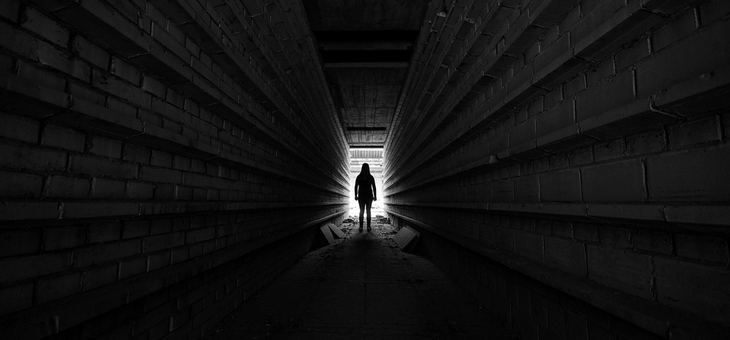Death. Perhaps Ernest Hemingway summed it up nicely when recounting being badly injured by an exploding shell on a World War I battlefield. He wrote in a letter home that “dying is a very simple thing. I’ve looked at death, and really I know. If I should have died it would have been very easy for me. Quite the easiest thing I ever did.”
What are near-death experiences?
Before advancements in medical science, the line between life and death was a clear one. The heart stopped pumping, the brain lost function and death was there. No-one ever came back.
But now, with ventilators to keep the lungs pumping air and defibrillators to restart a stopped heart, it’s a different story.
Near-death experiences (NDEs) occur during a singular life-threatening incident such as heart attack, drowning, blunt force trauma, etc.
Read more: Heart disease remains the No. 1 killer, dementia into top 10
Thousands of survivors of these terrifying situations come out the other side with stories of seeing a white light or even feeling the presence of deceased loved ones. Others have reported a feeling of absolute peace, being transported through a tunnel or floating above their bodies.
Dr Bruce Greyson, a leading expert on NDEs and author of After: A Doctor Explores What Near-Death Experiences Reveal About Life and Beyond, has spent the past 50 years seeking to understand this phenomenon.
He started out as a self-confessed sceptic and classed himself as a “materialistic scientist” until he started noticing patterns in the way patients were describing their NDEs. Patient after patient could recall their experience with incredible accuracy, and, quite often, they were similar to stories he had heard before.
Here’s what he learnt from collating the stories he heard.
Many describe an ‘unearthly realm’
According to Dr Greyson, those who experience NDEs “often find themselves in some unearthly realm that isn’t the normal, physical world”. Sometimes people interpret it as a tunnel with a light at the end, just a means to transport them somewhere. “But I’ve talked to people in less developed countries where there aren’t a lot of tunnels, and they’ll say they went into a cave or fell into a well.” Again, people tend to use their own frame of reference to describe what they experienced, so it may vary depending on the person.

“Some people describe it in heavenly terms,” adds Dr Greyson. “Some people describe it in pastoral terms, a beautiful garden or a lush forest. But most say, ‘I can’t describe it. It didn’t have features, but it had a feeling. I felt loved, and I felt warm, and I felt comforted, and I was not alone.”
There’s a sense of peace
Many people describe feeling an overwhelming sense of peace and wellbeing during NDEs.
Why would the brain react to death in such a way? Well, death is a scary thing. Scientific accounts of NDEs characterise it as the body’s psychological and physiological response mechanism to such fear, producing chemicals in the brain that calm the individual while inducing euphoric sensations to reduce trauma.
Read more: Five expert ways how to calm the mind
Some might regard it as “seeing the light”, which Dr Greyson notes isn’t so much a fluorescent light or sun as it is a radiation of tremendous love, acceptance, and warmth. “They feel enveloped by it; it permeates their being, and they don’t know what to call it,” he notes.
People are less interested in material things afterwards
“The most interesting part of NDEs is the way they change people’s lives,” says Dr Greyson. “They typically dramatically change people’s attitudes, beliefs, values, and behaviour forever,” no matter whether they have the experience as children, teenagers, or later in life.
Particularly, people become less interested in the material world – things like power, prestige, fame, and competition. But more interested in the spiritual side of things, like relationships, compassion and altruism.
They are profoundly changed afterwards, and tend to have trouble fitting back into everyday life. Some embark on radical career shifts, leave their spouses, or search high and low for their true purpose in life.
People are less afraid of dying
One of the most common reports after an NDE is that people come back fearing death a little less. The powerful, mystical experiences can lead to a permanent transformation of their lives.
Read more: How to tackle the touchy subject of death
It’s almost as if they know they’ll be okay, so are less afraid to return.
“People consistently, from all over the world, say that the near-death experience leads you to a place that is not something to be feared,” says Dr Greyson.
Have you ever had an NDE? Do you know someone who has? Can you describe your experience?
If you enjoy our content, don’t keep it to yourself. Share our free eNews with your friends and encourage them to sign up.

